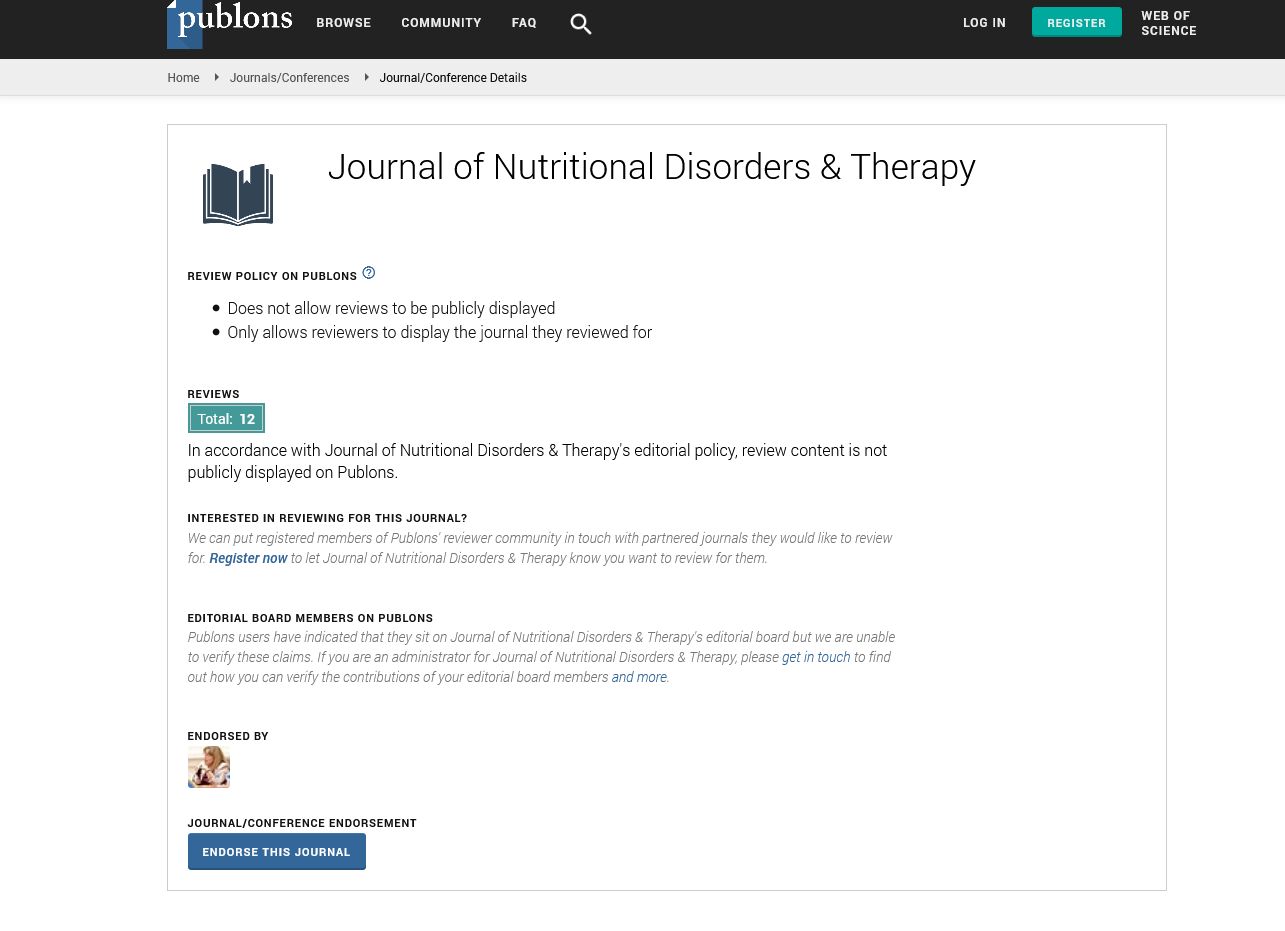Indexed In
- Open J Gate
- Genamics JournalSeek
- Academic Keys
- JournalTOCs
- Ulrich's Periodicals Directory
- RefSeek
- Hamdard University
- EBSCO A-Z
- OCLC- WorldCat
- Publons
- Geneva Foundation for Medical Education and Research
- Euro Pub
Useful Links
Share This Page
Journal Flyer

Open Access Journals
- Agri and Aquaculture
- Biochemistry
- Bioinformatics & Systems Biology
- Business & Management
- Chemistry
- Clinical Sciences
- Engineering
- Food & Nutrition
- General Science
- Genetics & Molecular Biology
- Immunology & Microbiology
- Medical Sciences
- Neuroscience & Psychology
- Nursing & Health Care
- Pharmaceutical Sciences
The impacts of a combined exercise programme on HbA1c, weight and GLP-1 hormone in type 2 diabetes patients
26th International Conference on Clinical Nutrition
March 08, 2021 | WEBINAR
Nawal Alsubaie
De Montfort University, United Kingdom
Posters & Accepted Abstracts: J Nutr Disorders Ther
Abstract:
Diabetes mellitus (DM) is a chronic disease characterized by chronic persistent hyperglycaemia (Goyal and Jialal, 2018). This hyperglycaemia accompanied with metabolic disorder leads to organ damage and serious complications. Type 2 diabetes (T2D) is a global epidemic which has increased with increasing obesity and sedentary life style (Goyal and Jialal, 2018). Diabetes is usually accompanied by hypertension, lipid disorders and obesity. Recent studies show that a reduction in HbA1c cause 35% relative risk reduction for fatal/nonfatal cardiovascular disease. Also 56% reduction in CVD when this reduction of HbA1c is accompanied with systolic blood pressure (SBP) decrease (Eeg-Olofsson et al., 2016). Moreover, 75% reduction in CVD if reduction of HbA1c and SBP accompanied with decrease in non-HDL level (EegOlofsson et al., 2016). The aim of this study to show that combination exercise is effective. It will compare T2D and non-diabetes (ND) volunteers doing combination exercise consisting of resistance and cycling. The interventions are minor and fairly short consisting of 12 episodes of exercise over 6 weeks, yet this was enough to produce measurable change and improvement. This included the re-categorization of two T2D volunteers to being ND, using normal metrics. A literature search was conducted by using electronic databases (Science direct, google scholar, Medline, Embase, Sport medicine, PubMed, CINAHL, Cochrane library, and Scopus) from April 2015 until January 2019. Key words used are T2D, incretin and exercise. Each exercise session will consist of a combined exercise protocol of 30 min of resistance exercise followed by 20 min moderate cycling twice a week for 6 weeks. Volunteer should stretch-up for 11 steps of stretching, then the volunteer must cycle for five minutes to warm up. Blood samples collected at base line after S1, S2, S4, S6, S8, S10 and S12. Blood samples centrifuge and refrigerate to be analysed by The Evidence Investigator™ Biochip Array technology (Randox, UK) is a Multiplexing ELISA technology which described previously in section 3.10. It is also analysed by a commercially available enzyme-linked immunosorbent assay (ELISA) with <0.01 cross reactivity with GLP-1 kit as explained in section 3.9.2.

